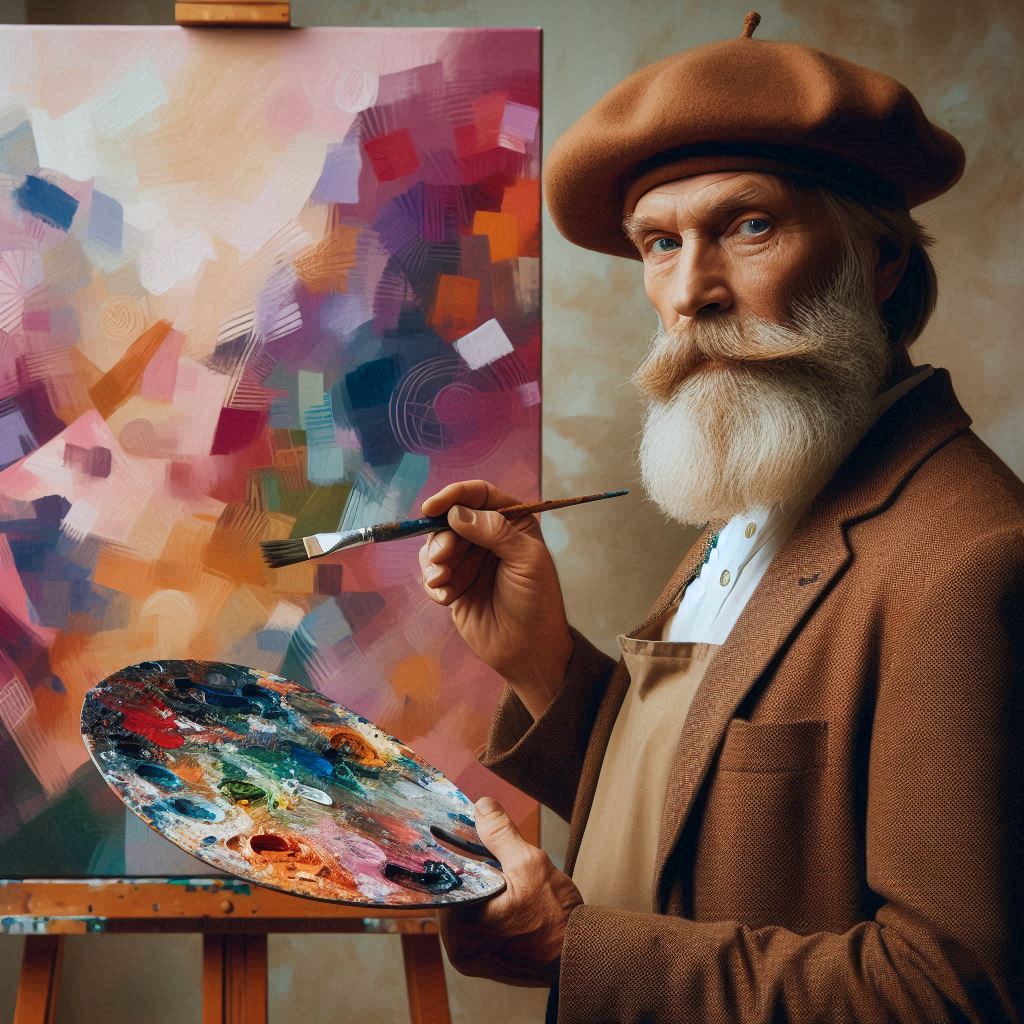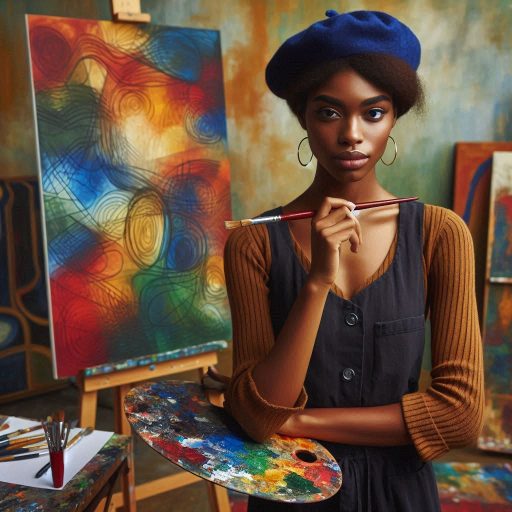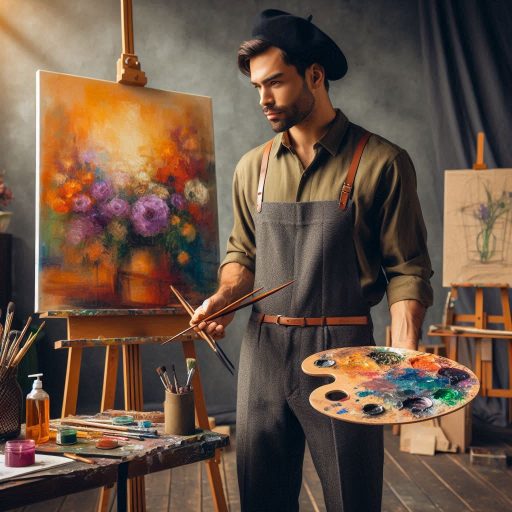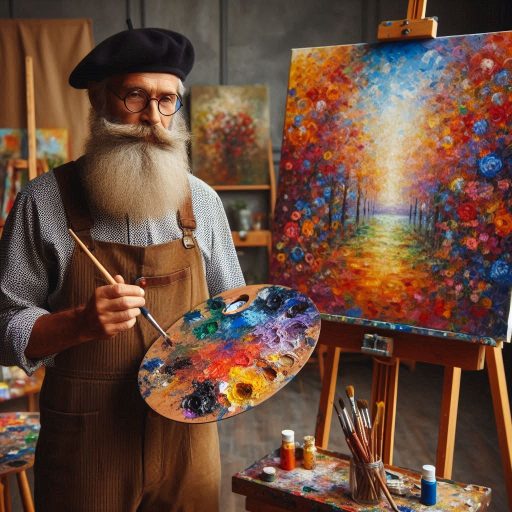Introduction
Art and design careers are experiencing a remarkable surge in interest as society increasingly values creativity, innovation, and aesthetic appeal across various sectors.
The digital age has revolutionized how we perceive and interact with art, leading to a heightened appreciation for design in everyday life.
From the branding of businesses to the user interfaces of apps, design plays a pivotal role in shaping experiences and influencing consumer behavior.
This growing recognition has inspired countless individuals to consider careers in art and design, where they can transform their passions into professional pursuits.
As more people seek to express their creativity and connect with their artistic side, the range of career opportunities in art and design continues to expand.
Various fields offer unique avenues for creative expression, including graphic design, illustration, fashion design, interior design, and animation.
Each of these careers provides the chance to work on exciting projects that can impact people’s lives and the world around them.
In graphic design, professionals create visual content that communicates messages and engages audiences through various media.
Illustrators bring stories to life with their artistic flair, while fashion designers shape the latest trends and influence personal style.
Interior designers create functional and aesthetically pleasing spaces that enhance the quality of life for individuals and businesses alike.
Animation, on the other hand, blends art and technology to produce captivating visual narratives for film, television, and video games.
This blog will delve into these top career opportunities in art and design, highlighting the skills required and the potential paths for those passionate about creativity.
Graphic Design
The Role of Graphic Designers in Creating Visual Concepts
Graphic designers play a key role in creating visual concepts that communicate messages to audiences.
They use their creativity to design logos, websites, brochures, and advertisements.
These designs help shape a brand’s identity, communicate ideas, and evoke emotions.
Graphic designers must understand their clients’ needs and translate them into visually compelling content that grabs attention.
Their work influences how people perceive products, services, or companies, making it vital in today’s media-driven world.
The Skills and Tools Needed for Graphic Design
To succeed as a graphic designer, professionals must develop both creative and technical skills.
Key design principles, such as typography, color theory, and composition, are fundamental.
Graphic designers must also be proficient in industry-standard tools.
Software like Adobe Illustrator, Photoshop, and InDesign is essential for creating and editing visuals.
Strong attention to detail is required to ensure designs are polished and professional.
Problem-solving skills are also necessary, as designers often need to find creative solutions to communicate ideas effectively.
Staying up-to-date with the latest design trends and technologies is crucial in this ever-evolving field.
The Different Career Paths Within Graphic Design
Graphic design offers diverse career opportunities, depending on an individual’s interests and skills.
A common path is working as a branding designer, focusing on creating logos, color schemes, and visual identities for businesses.
Others may pursue a career as a web designer, crafting the layout and visual elements of websites to enhance user experience.
Advertising designers specialize in creating visual content for marketing campaigns, such as banners, social media posts, and promotional materials.
Additionally, packaging designers focus on the visual appeal of product packaging, ensuring that the design stands out on store shelves.
Some designers may choose to become freelancers, offering flexibility and the opportunity to work with various clients.
Graphic design remains a dynamic field with endless possibilities, making it an exciting career choice for those with a passion for visual creativity.
Read: Top Skills Needed for a Successful Character Designer
Interior Design
The Responsibilities of Interior Designers in Creating Functional and Aesthetically Pleasing Spaces
Interior designers are responsible for creating spaces that are both functional and visually appealing.
They work closely with clients to understand their needs and preferences, then translate those into well-designed spaces.
Whether it’s a home, office, or public building, interior designers focus on optimizing space while ensuring comfort and practicality.
They select materials, furniture, lighting, and décor that align with the desired style while balancing budget constraints.
Interior designers also consider factors such as safety, sustainability, and building codes, ensuring the space meets both aesthetic and regulatory requirements.
Discuss the Educational Requirements and Certifications Needed for a Career in Interior Design
To pursue a career in interior design, formal education is essential.
Most interior designers hold a bachelor’s degree in interior design or a related field.
Coursework typically covers design principles, architecture, spatial planning, color theory, and computer-aided design (CAD) software.
In addition to education, certifications can enhance credibility and career prospects.
In many regions, interior designers must pass the National Council for Interior Design Qualification (NCIDQ) exam to become certified.
Other certifications, like LEED (Leadership in Energy and Environmental Design), can showcase expertise in sustainable design, further boosting career opportunities.
Explore the Different Areas of Specialization Within Interior Design
Interior design offers a wide range of specializations depending on personal interests and career goals.
Residential interior design focuses on designing private homes, creating spaces that reflect the homeowner’s style while ensuring comfort and functionality.
Commercial interior design, on the other hand, involves designing public spaces such as offices, hotels, and retail environments.
These projects often require maximizing space efficiency and improving user experience.
Sustainable interior design is another growing field, where designers prioritize environmentally-friendly materials and energy-efficient solutions.
Some professionals may specialize in kitchen and bath design, working on layouts, fixtures, and finishes to create efficient and stylish spaces.
Interior designers can also focus on hospitality design, creating inviting atmospheres in restaurants, hotels, and other leisure establishments.
With numerous career paths available, interior design offers the chance to shape environments that impact people’s daily lives, making it a rewarding field for those passionate about aesthetics and functionality.
Read: Career Paths in Ceramic Art and Design
Fashion Design
Describe the Process of Creating Clothing and Accessory Designs
Fashion design begins with inspiration, often drawn from art, culture, or nature.
Designers sketch ideas, experimenting with different shapes, styles, and materials.
Once a concept is finalized, designers create patterns, which serve as blueprints for cutting and assembling fabrics.
The next step involves selecting materials that align with the design’s vision and functionality.
After the fabric is cut, it is sewn into prototypes or samples.
Designers then refine their creations through fittings and adjustments, ensuring the pieces are both fashionable and wearable.
The final product is presented through fashion shows, lookbooks, or retail displays, ready for production or sale.
Highlight the Skills and Qualities Necessary for Success in Fashion Design
Fashion designers need a combination of technical skills and creativity to thrive in the industry.
Strong drawing skills and the ability to visualize concepts in 3D are essential for sketching and designing garments.
Sewing and pattern-making skills are also crucial for transforming designs into finished products.
Designers must be adept at fabric selection and understand how different materials affect fit and structure.
Trend forecasting and an understanding of color theory are important for staying relevant and creating fashionable items.
Additionally, attention to detail and time management are necessary to meet production deadlines and maintain high-quality standards.
A successful fashion designer must also have an innovative mindset and the ability to think outside the box.
Problem-solving skills are vital, as designers often face challenges with materials, fit, or production.
Strong communication and collaboration skills are essential when working with manufacturers, suppliers, or teams.
Finally, having a deep passion for fashion and the ability to take risks in design is often the difference between good and great designers.
Discuss the Potential Career Paths in the Fashion Industry
Fashion design offers diverse career paths, each with unique creative opportunities.
Haute couture is a prestigious path where designers create custom, high-fashion garments for private clients or runway shows.
Haute couture designs are often extravagant and meticulously crafted, highlighting a designer’s creativity and technical skill.
Ready-to-wear (prêt-à-porter) is another prominent career path, where designers create mass-produced clothing lines for retail.
These collections focus on fashion-forward designs that are accessible and wearable for the general public.
Costume design is another niche within fashion, where designers create clothing for film, theater, and television productions.
Costume designers work closely with directors to craft garments that reflect the time period, characters, or themes of the production.
There is also a growing interest in sustainable fashion, with designers focusing on eco-friendly materials and ethical production methods.
Additionally, fashion designers may pursue careers as stylists, textile designers, or fashion consultants, further expanding opportunities within the industry.
Fashion design provides endless possibilities for creative expression, making it a dynamic and rewarding career path.
Read: Freelance Character Design: How to Get Started

Art Therapy
Explain the Role of Art Therapists in Helping Individuals Express Themselves Through Art
Art therapists use creative expression to help individuals explore emotions, resolve conflicts, and cope with challenges.
They work with people of all ages, guiding them to use art as a tool for communication when words fall short.
Through painting, drawing, sculpting, or other mediums, clients can express complex emotions and gain insight into their thoughts and behaviors.
Art therapists create a safe, non-judgmental space where individuals can reflect on their art and better understand their feelings.
Their work is especially valuable for those dealing with trauma, anxiety, depression, or developmental disorders, as it provides a therapeutic outlet for healing and self-discovery.
Discuss the Educational and Licensing Requirements for a Career in Art Therapy
To become an art therapist, a master’s degree in art therapy or a related field is typically required.
Coursework usually covers psychology, counseling techniques, human development, and, of course, the therapeutic use of art.
In addition to academic training, students often complete supervised clinical internships to gain hands-on experience working with clients.
Licensing requirements vary by country or state, but most regions require aspiring art therapists to pass a certification exam, such as the Art Therapy Credentials Board Exam (ATCBE).
Continued education and professional development are also necessary to maintain licensure and stay updated on the latest therapeutic practices.
Explore the Settings in Which Art Therapists Can Work, Such as Hospitals, Schools, and Mental Health Clinics
Art therapists have diverse opportunities in various settings, offering support to a wide range of individuals.
Hospitals are a common workplace, where art therapists help patients cope with physical illnesses, trauma, or chronic pain.
Their work provides emotional relief and improves mental well-being for patients undergoing long-term treatments.
Schools also employ art therapists to work with children and adolescents, addressing behavioral, emotional, or social challenges.
In this setting, art therapy can foster self-expression, improve communication skills, and boost confidence.
Mental health clinics are another common environment, where art therapists work alongside other healthcare professionals to support individuals with mental health disorders.
They help clients process emotions and manage stress through creative activities.
Additionally, art therapists may work in rehabilitation centers, aiding those recovering from addiction or physical injuries.
Some may also work in nursing homes, helping elderly residents manage the emotional challenges of aging or memory loss.
Others pursue careers in private practice, offering tailored therapeutic sessions to clients of various backgrounds and needs.
The flexibility of art therapy allows professionals to work in numerous settings, each offering the opportunity to help individuals find healing and growth through creative expression.
Read: Career Paths: Becoming a Professional Character Designer
Industrial Design
Outline the Responsibilities of Industrial Designers in Creating Products That Are Both Functional and Aesthetically Pleasing
Industrial designers are responsible for designing products that are both functional and visually appealing.
They work on a wide range of items, from everyday household objects to complex machinery.
Industrial designers start by researching user needs and market trends to ensure the product meets both practical requirements and consumer expectations.
Their role includes sketching concepts, creating prototypes, and refining designs through testing and feedback.
They must balance usability with aesthetics, ensuring the product performs its function efficiently while maintaining a visually attractive and ergonomic form.
Industrial designers often collaborate with engineers, manufacturers, and marketers to bring their designs to life.
Discuss the Skills and Software Tools Used in Industrial Design
Industrial designers need a mix of technical, creative, and problem-solving skills to succeed.
Strong drawing and sketching abilities help them communicate ideas clearly in the early stages of design.
They also need an in-depth understanding of materials, production processes, and ergonomics to ensure their designs are practical and manufacturable.
Problem-solving is key, as they must address issues related to function, cost, and sustainability.
Mastery of design software is critical for industrial designers.
Tools like AutoCAD, SolidWorks, and Rhino are commonly used for 3D modeling and rendering.
These programs allow designers to create detailed prototypes and virtual simulations of their designs, helping them refine every aspect before production.
Adobe Illustrator and Photoshop are also used for graphic elements and presentations.
Familiarity with rapid prototyping tools, such as 3D printers, is becoming increasingly important in the field, enabling designers to quickly create and test physical models.
The Career Opportunities in Industries Such as Product Design, Automotive Design, and Packaging Design
Industrial design offers diverse career opportunities across various industries.
Product design is one of the most common paths, where designers create consumer products such as electronics, furniture, or kitchen appliances.
In this field, designers focus on making everyday objects more functional, user-friendly, and attractive.
Another exciting path is automotive design, where designers work on creating cars and other vehicles, focusing on elements such as exterior aesthetics, interior layout, and user interface systems.
Automotive designers often combine cutting-edge technology with sleek, futuristic aesthetics.
Packaging design is another specialized area where industrial designers create functional and visually appealing packaging for products.
Their work ensures the product is well-protected, easy to handle, and appealing on store shelves.
This field often requires a deep understanding of materials and manufacturing processes, as well as branding and marketing.
Additionally, industrial designers can work in medical device design, developing innovative tools and equipment for healthcare, or in sustainability-focused roles, creating eco-friendly products and packaging.
With technological advancements and a growing focus on sustainability, industrial design remains a dynamic and promising career field with vast potential for innovation.
Transform Your Career Today
Unlock a personalized career strategy that drives real results. Get tailored advice and a roadmap designed just for you.
Start NowAnimation
The Process of Creating Moving Images Through Animation
Animation is the process of creating moving images by displaying a sequence of drawings or models in rapid succession.
The process typically starts with an idea or concept, which is then developed into a storyboard.
Storyboards are visual representations of key scenes that guide the flow of the animation.
Next, animators create detailed character designs and backgrounds.
In traditional 2D animation, artists draw each frame by hand, while in 3D animation, they use computer software to model and animate characters and objects.
Once the artwork is complete, frames are compiled and synchronized with sound and dialogue to bring the animation to life.
The final step involves editing and adding visual effects, ensuring a smooth and engaging motion.
The Skills Needed for a Career in Animation, Such as Drawing, Storytelling, and Computer Animation
To excel in animation, a combination of artistic, technical, and storytelling skills is essential.
Drawing skills are the foundation of many animation careers, especially for 2D animators, who must create clear and expressive characters and scenes.
Even 3D animators need strong drawing abilities to conceptualize designs before they move to software.
Storytelling is another crucial skill, as animators need to convey emotions, ideas, and narratives through visuals.
Understanding pacing, character development, and visual composition is key to creating compelling animated stories.
Proficiency in computer animation software is vital for modern animators.
Tools like Maya, Blender, and Adobe After Effects are commonly used for 3D modeling, animation, and visual effects.
Knowledge of motion graphics and rigging (setting up characters for movement) is important for creating fluid animations.
Additionally, attention to detail and problem-solving skills help animators refine movements, resolve technical issues, and perfect the final product.
The Different Types of Animation Careers, Including 2D Animation, 3D Animation, and Visual Effects
Animation offers a wide range of career paths, each with its own unique creative challenges.
2D animation involves creating characters and scenes in a flat, two-dimensional space.
It is often used for TV shows, web series, and traditional animated films.
2D animators may work in hand-drawn animation or use digital tools like Adobe Animate to create smoother workflows.
This field is perfect for artists who enjoy drawing and character design.
3D animation is a growing field where animators create three-dimensional models and environments, giving characters more depth and realism.
3D animation is widely used in movies, video games, and virtual reality experiences.
Visual effects (VFX) animation involves creating realistic or fantastical effects, such as explosions, weather, or magical elements, and integrating them into live-action films or videos.
VFX artists work with tools like Houdini or Nuke to blend digital effects seamlessly with real footage.
Other career options include stop-motion animation, where physical models or puppets are photographed frame by frame, and motion graphics, where animators create dynamic visuals for advertisements, websites, or films.
Whether in film, gaming, television, or marketing, the animation industry offers a range of exciting career opportunities for those passionate about storytelling and creativity.
Photography
Art and Techniques of Capturing and Editing Photographs
Photography is the art of capturing moments through a camera lens, translating the world into visual narratives.
To create impactful photographs, photographers must master both the technical aspects and artistic elements of their craft.
Understanding exposure, composition, lighting, and framing is essential for capturing stunning images.
Exposure involves controlling the amount of light that reaches the camera sensor, using the three components: aperture, shutter speed, and ISO.
Photographers must also consider composition techniques, such as the rule of thirds or leading lines, to guide the viewer’s eye and enhance the image’s appeal.
Editing plays a crucial role in photography, allowing photographers to enhance their images further.
Software like Adobe Lightroom and Photoshop helps photographers adjust colors, contrast, and sharpness, as well as remove distractions or imperfections.
Editing can transform a good photograph into a great one, bringing out the desired mood and tone.
Techniques such as cropping, color grading, and retouching are commonly employed to refine the final image and align it with the photographer’s vision.
Different Genres of Photography, Such as Portrait, Landscape, and Fashion Photography
Photography encompasses various genres, each with its own unique style and purpose.
Portrait photography focuses on capturing the personality and mood of individuals or groups.
Portrait photographers often use controlled lighting and backgrounds to emphasize their subjects.
They may work in studios or on location, depending on the desired aesthetic.
Landscape photography captures the beauty of nature, showcasing expansive views, mountains, forests, and bodies of water.
Landscape photographers often work during golden hours—early morning or late afternoon—when natural light creates stunning effects.
They may use techniques like long exposure to enhance movement in elements like water or clouds.
Fashion photography combines art and commercial elements, highlighting clothing, accessories, and beauty.
Fashion photographers work closely with models, stylists, and designers to create visually striking images for magazines, advertisements, and lookbooks.
This genre often requires a strong understanding of trends, aesthetics, and the ability to convey emotions through visual storytelling.
Career Opportunities in Photography, Including Freelance Work, Studio Photography, and Photojournalism
Photography offers diverse career opportunities for aspiring professionals.
Many photographers choose freelance work, allowing them to explore various genres and projects.
Freelancers often build a portfolio to showcase their work, attracting clients in areas such as events, weddings, and commercial projects.
They must also manage their marketing and business operations, ensuring a steady flow of clients.
Studio photography is another avenue, where photographers work in controlled environments, capturing portraits, product shots, or still life images.
Studio photographers often collaborate with clients to create specific looks, using studio lighting and backdrops to achieve desired effects.
They may work for photography studios, advertising agencies, or corporate clients.
Photojournalism is a dynamic field that combines photography with storytelling, capturing real-life events and issues.
Photojournalists work for newspapers, magazines, and online media outlets, documenting news stories, cultural events, and social issues.
They must possess strong research skills, be able to work under pressure, and adapt to various environments to capture compelling images that tell powerful stories.
In addition to these paths, photographers can explore opportunities in commercial photography, wildlife photography, sports photography, or art photography, offering numerous avenues for creative expression and career growth.
The evolving digital landscape continues to expand opportunities for photographers, allowing them to reach wider audiences through social media and online platforms.
Conclusion
Art and design present a wide range of exciting career opportunities, such as graphic design, illustration, fashion design, interior design, and animation.
Each of these careers allows individuals to express their creativity while also providing stability and growth potential in today’s job market.
Whether you’re drawn to digital media, traditional art forms, or innovative design concepts, there’s a career in this field that aligns with your unique talents and passions.
By exploring your interests and continuously developing your skills, you can carve out a successful path in the art and design industry.
Many creative careers also offer flexibility, with opportunities to work freelance, in-house, or even start your own business.
The possibilities are vast for those willing to embrace their artistic side and stay adaptable in this evolving field.
To further your career in art and design, take advantage of online courses, attend industry events, and seek mentorship from professionals.
These resources will provide valuable insights and guidance to help you succeed in this competitive yet rewarding field.
[E-Books for Sale]
The Big Book of 500 High-Paying Jobs in America: Unlock Your Earning Potential
$19.99 • 500 High-Paying Jobs • 330 pages
Explore 500 high-paying jobs in America and learn how to boost your career, earn more, and achieve success!
See All 500 High-Paying Jobs of this E-Book
1001 Professions Without a Degree: High-Paying American Jobs You Can Start Now
$19.99 • 1001 Professions Without a Degree • 174 pages
Discover 1001 high-paying jobs without a degree! Unlock career tips, skills, and success strategies for just $19.99!




